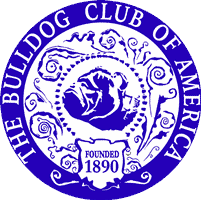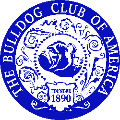Members Only Area
As your puppy matures, you must adjust the feeding schedule to ensure that there is sufficient food and water to maintain growth and sustain hydration but not so much as to cause digestive problems. When the puppy comes home, it will need to be fed about every two hours. Within a week or less, the time between feedings can begin to be lengthened as the puppy's nursing abilities improve and the mother's milk becomes more plentiful.
In doing this you will become an aficionado of stool and urine color and consistency. You probably already know what well-formed normal stool looks like. If your puppy is being overfed, its stool will usually become loose and the color may change from brown to green or yellow. These are signs that the puppy is not fully digesting its meals. Loose stools are a potential problem because they can lead to dehydration through excess loss of fluids and may be a sign of digestive issues. Usually, increasing the time between feedings will return the stool to its normal color and consistency.
Urine is another indicators or the healthiness of your puppy. If there is no or very little urine or its color is very dark, it can be a sign of too little liquid intake or problems processing urine. If increasing liquid intake or changing feeding frequency does not show a change in volume or color of stool or urine, you should consult your veterinarian.
You should also read the sections on Socialization, Safety, and Grooming in Bulldog Maintenance.
Feeding at 13 weeks is four times a day, as follows:
- 6:00-7:00_A.M. 2 cups dry food + 1-2 Tablespoons of yogurt or cottage cheese
- 1:00-2:00_P.M. 2 cups dry food + table scraps, canned dog food or pan drippings
- 6:00-7:00_P.M. 2 cups dry food + table scraps, canned dog food or pan drippings
- 11:00 P.M. dry food - light meal
Some of his favorite additives are likely to be: canned dog food, liver, chicken liver, chicken or chicken drippings, chopped meat, evaporated milk, scrambled eggs. Eggs (well cooked) are an excellent source of protein for dogs. Yogurt and cottage cheese are also nutritious.
He will probably drop one meal (the late one) by himself between four and five months and may stretch the time between meals. He should go to two meals around six to eight months. Let him decide for himself when to cut back. There's no magic about the timing.
You should make meal time interesting to the dog. Some dogs eat well and maintain weight (easy keepers), while others need special encouragement (poor keepers). Since bulldogs should be well padded, but not fat, with no ribs showing, you must to get them to eat enough.
Whatever kind of keeper your dog is, mealtime should be fun. Call him as you begin preparing his meal, using the same words each time ("Puppy - dinner time" works fine). Talk to him while you're preparing it. This will get him interested and ready to eat once you put the bowl down. Once your dog has matured, you can switch to a lower calorie food if he has a tendency to gain weight. Our dogs tend to be easy keepers once they have matured.
Our dogs eat Purina Pro Plan dog food. He should stay on whatever the breeder has been feeding for a while. Any change should be made slowly to reduce the possibility of diarrhea. An equivalent high digestibility food, like Eukanuba, Iams, or Bil-Jac is preferable. These are available in pet stores and many dogs do well on them. Purina One is available in supermarkets and is as good as the others. Your dog will reach adult weight at about one year of age, but will continue to mature and redistribute the weight long after that. We've had some dogs fully mature at 14-16 months; others were still growing at two years. Some dogs react differently to different dog foods. Experiment, if necessary, to find the right one for your dog.
Some dogs get bored with their food after five or six months. If that happens, switch to something else for a while. Some people recommend dog food made without preservatives, like Bil-Jac or Abady. The long term effect of the additives in most dog foods is not well documented. As we are finding out about problems with human foods, we are learning about dog foods. Our dogs have done well on dog foods with the preservatives. It's up to you how conservative you want to be in this.
If you must switch foods suddenly, he will probably have loose stools for a few days. If you decide to change his food, do it gradually by mixing the two foods in shifting proportions over the course of a week until he is completely switched over.
Water always should be available.
Clip-on water bowls are available which attach to the side of crates. In the yard, place a good size bowl in the same spot each time he is out. He will learn about it quickly and will help himself when he wants it. Check it regularly, especially in the summer, to be sure it has water. A heavy bowl, wide at the base, is best since it reduces the likelihood of accidental spillage. We've had dogs who went through periods of having to stand in their water bowls when drinking, so stability counts.
You should teach him to eat ice cubes. Start with small broken pieces; eventually he'll eat whole cubes. They consider them a treat, especially when they're hot. They work wonders in cooling off a dog that is overheated and panting and can calm dogs that are over excited. It also keeps the water bowl cool in hot weather.
When he begins teething, an Ascriptin (using child dosages from the bottle) and/or a washcloth that has been soaked and frozen will give him some relief from teething pain.


